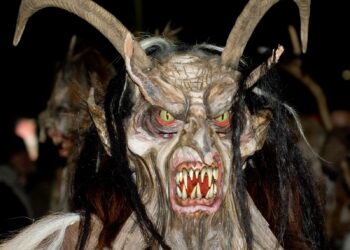Billions of people celebrate Christmas on December 25th. From the end of November onwards, a series of traditions and customs kick off. Some of these traditions come from religion — Christianity, to be specific. But some practices are actually pagan or are firmly anchored in pagan celebrations.
Let’s take a look at some of them and then see how these practices evolved and how pagans made Christmas what it is today.
Ten Christmas practices that are actually pagan
Christmas Tree
The trees that we decorate for Christmas don’t show up in the Bible. They’re derived from ancient Germanic and Scandinavian customs of bringing evergreens into the home during the winter solstice, symbolizing life amidst the tough winter. The Christmas tree has become a central element of Christmas decorations worldwide, often adorned with lights and ornaments.
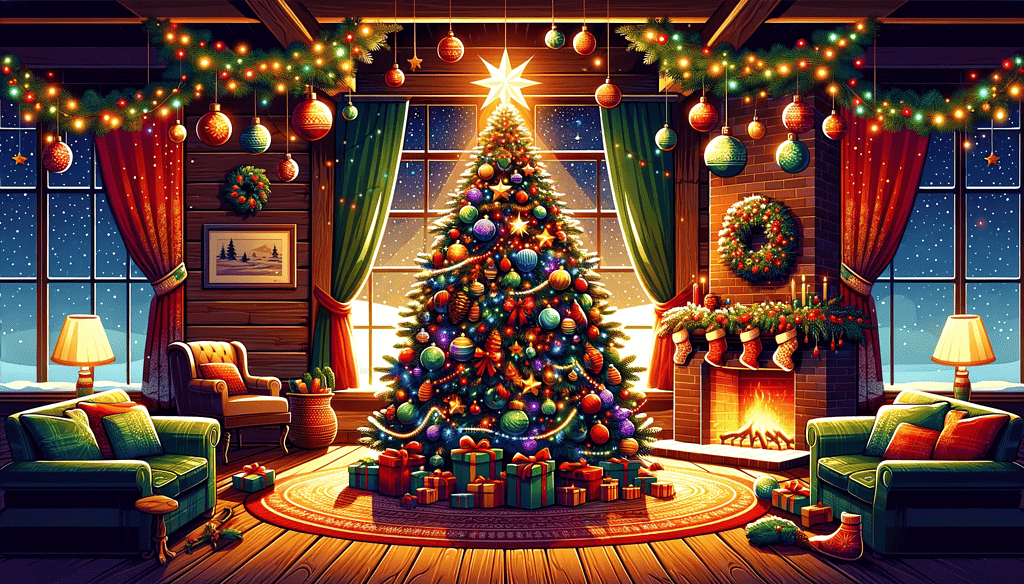
Mistletoe
Used by the Druids in their winter ceremonies and considered a symbol of fertility and vitality; the tradition of kissing under the mistletoe stems from Norse mythology and tales. In Norse mythology, the mistletoe plays a rather infamous role, being inadvertently responsible for killing the god Balder. However, the Druids cherished this plant and from them, hanging mistletoe has become a Christmas tradition. The custom of kissing underneath it symbolizing love and friendship.
Wreaths
Circular wreaths made of evergreens, symbolizing eternal life, were used in pagan winter solstice rituals. The wreath is also linked to the Germanic practice of decorating Christmas trees. Nowadays, wreaths are hung on doors during the Christmas season as decorations and symbols of welcome and festivity.
Gift Giving
This echoes the Roman tradition of Saturnalia, which actually inspired Christmas in the first place. In Saturnalia, gifts were exchanged as a part of the festivities, often as a sign of goodwill and societal reversal. But this tradition goes even deeper. Saint Nicholas, which was associated with gift giving in Christianity, became somewhat intertwined with Odin, the Norse God — who was also a gift giver. The two overlapped in some characteristics and further cemented the Christmas practice of gift giving.
Feasting and Parties
If your Christmas involves a lot of food and a feast, thank your pagan ancestors. Many of the festive gatherings and feasts during Christmas have origins in winter solstice celebrations, where feasting was a way to celebrate survival and the return of the sun. Many ancient cultures held feasts during winter solstice celebrations as a way to come together, celebrate the year’s end, and the return of longer days. In the modeern age, Christmas is often marked by large family gatherings, feasts, and parties, continuing the tradition of communal celebration.
Bonfires and Candles
Symbolizing the light of the sun, bonfires and candles were important in pagan solstice celebrations and have parallels in Christmas lights and decorations. Of course, a bonfire isn’t really practical (although it’s still done in some traditions), so it’s been replaced by Christmas lights. Christmas lights and candles are used to decorate homes and streets, symbolizing light and warmth in the darkness of winter — a way to overcome the Winter Solstice and make it through the winter.
Yule Log
This tradition comes from Nordic and Germanic paganism, where a large log was burned in honor of the god Thor. The log was intended to bring protection and good luck. Originally a Nordic tradition where a large log was burned to celebrate the return of the sun during the winter solstice, symbolizing light and warmth.
Santa Claus
Yep, even Santa Claus is linked to the pagans. While today’s Santa is a blend of various traditions, some elements, like his nocturnal flight and chimneys’ use, have similarities to ancient pagan gods and spirits, particularly in Germanic and Norse mythology. Santa Claus has become a symbol of Christmas, delivering gifts to children around the world, incorporating elements of St. Nicholas, Odin, and other cultural figures.
Winter Solstice: The very timing of Christmas, near the winter solstice, aligns with ancient celebrations that marked the longest night and the return of the sun. The winter solstice, the shortest day of the year, was celebrated by many ancient cultures as the rebirth of the sun and the promise of spring.
12 Days of Christmas: This period can be linked to the length of the Norse Yule celebration, which also lasted about 12 days.
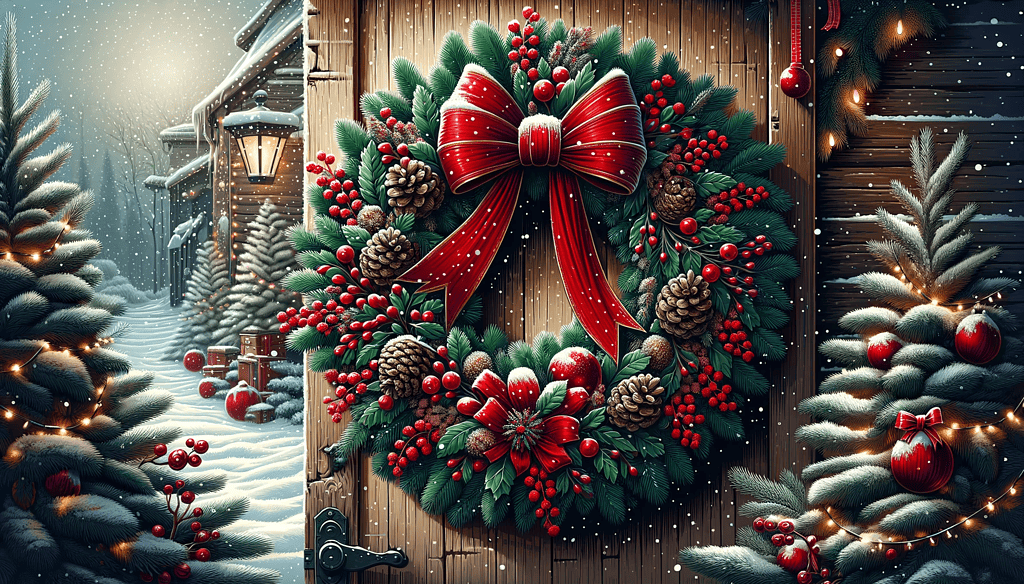
Origins of Pagan Winter Solstice Celebrations
If you’ve made it this far, have a sip of your warm drink and take a moment to ponder the origins of the various celebrations that are blended into Christmas. This is one of the oldest and most popular celebrations in the world. Heck, everyone knows what Christmas is! But although today we consider it as a Christian festival, in fact, Christmas goes back all the way to the Romans. In fact, it may even go back before the Roman time.
The roots of these festivities can be traced back to ancient pagan winter solstice celebrations. These early observances marked the shortest day and longest night of the year, a phenomenon that held great significance in pre-Christian times. The solstice, typically occurring around December 21st, was seen as a pivotal point where nature’s cycle shifted from growing darkness to increasing light.
Think of it like this: Christmas is now a moment of celebration. But for most of humanity’s history, the middle of the winter was a dreadful time. Food was scarce; you couldn’t work the land. It was cold. Survival was not a guarantee. So people thought that if they would appease one deity or another, this could help them. This is the essence of winter solstice celebrations.
Many of these celebrations are linked to the Sun. In pagan beliefs, the winter solstice was more than just an astronomical occurrence; it symbolized the rebirth of the sun, a beacon of hope during the darkest time of the year. It was a time to celebrate the inevitable return of light and warmth to the world, a powerful symbol of resilience and renewal.
Pagan celebrations change and evolve
Over centuries, these pagan traditions evolved, intertwining with the cultural and religious practices of various communities. As societies changed, so did their celebrations, leading to the development of numerous customs and beliefs around the winter solstice. These transformations illustrate the adaptability and resilience of these ancient rituals, which have managed to persist and evolve despite significant societal changes.
However, they maintained some common themes.
For isntance, rituals played a crucial role in pagan solstice celebrations. These often included offerings, chants, and specific rites designed to welcome the return of the sun. The ceremonies varied widely among different cultures but shared a common purpose of honoring the cycle of nature.
Feasts were another central aspect of these celebrations, featuring foods that held symbolic meanings. These feasts were not only a way to celebrate but also to foster community and kinship during the cold and dark winter months.
Bonfires were another common feature in many pagan solstice rituals, symbolizing the sun’s light and warmth. The act of lighting a fire was a defiant gesture against the darkness, a tangible representation of hope and the power of light.
Pagan Cultural Variations of Christmas
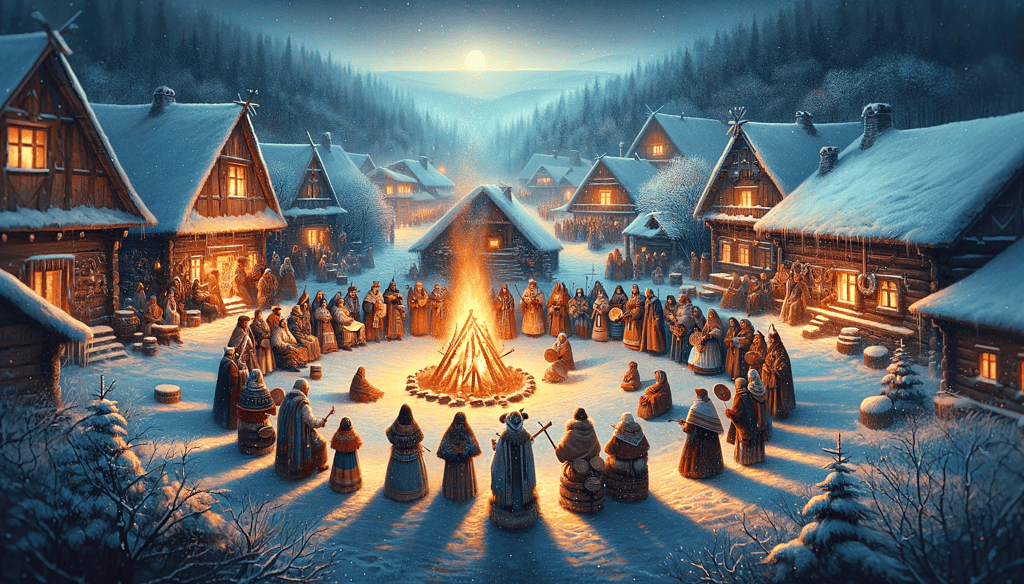
The word “pagan” doesn’t exactly clarify what cultures we’re talking about. In fact, there isn’t just one culture that inspired Christmas. Multiple cultures, beliefs, and rituals intertwine into Christmas folklore. Here are just some of them.
Northern European Traditions (Yule in Norse Paganism)
In Northern Europe, traditions like Yule, rooted in Norse paganism, were particularly prominent. Yule involved the burning of a special log and was celebrated with feasting, toasting, and honoring the gods and ancestors.
Roman Solstice Celebrations (Saturnalia)
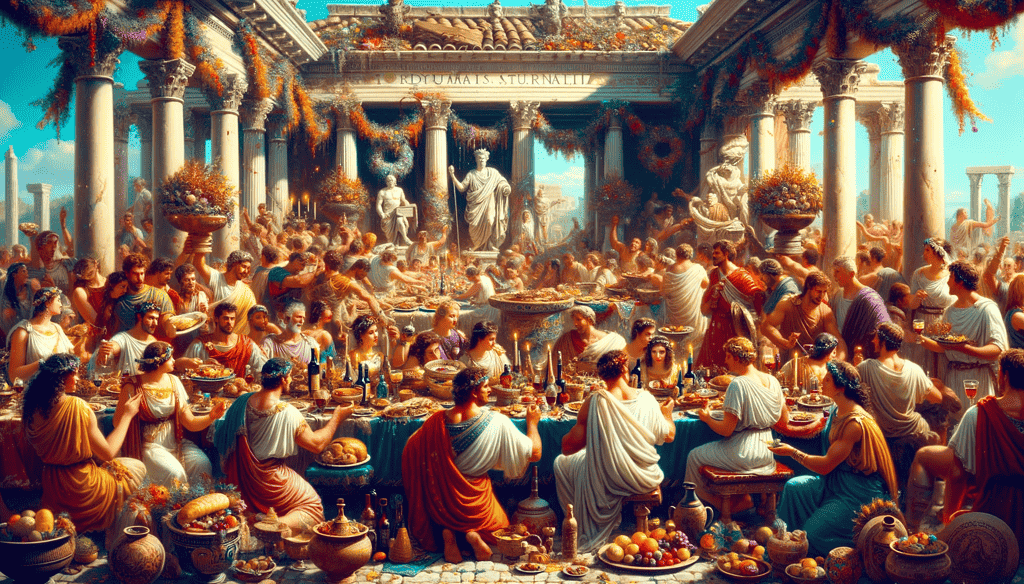
In ancient Rome, the winter solstice was marked by Saturnalia, a festival dedicated to the god Saturn. This celebration involved a reversal of societal roles, feasting, and the exchange of gifts, practices that echo in today’s holiday customs.
Celtic Traditions and the Rebirth of the Sun
Celtic traditions also held the winter solstice in high regard, often focusing on the theme of rebirth and renewal. The Celts celebrated with fires, feasts, and rituals that symbolized the return of the sun and the promise of spring.
Slavic Winter Festivals (Koliada)
In Slavic tradition, Koliada was a winter festival celebrated on the shortest day of the year. This festival included carols, which involved groups of people going house-to-house singing, a practice that is similar to modern Christmas caroling. The celebration was also marked by the preparation of special foods, decorating homes with evergreens, and burning a log or a wooden figure, paralleling the Yule log tradition.
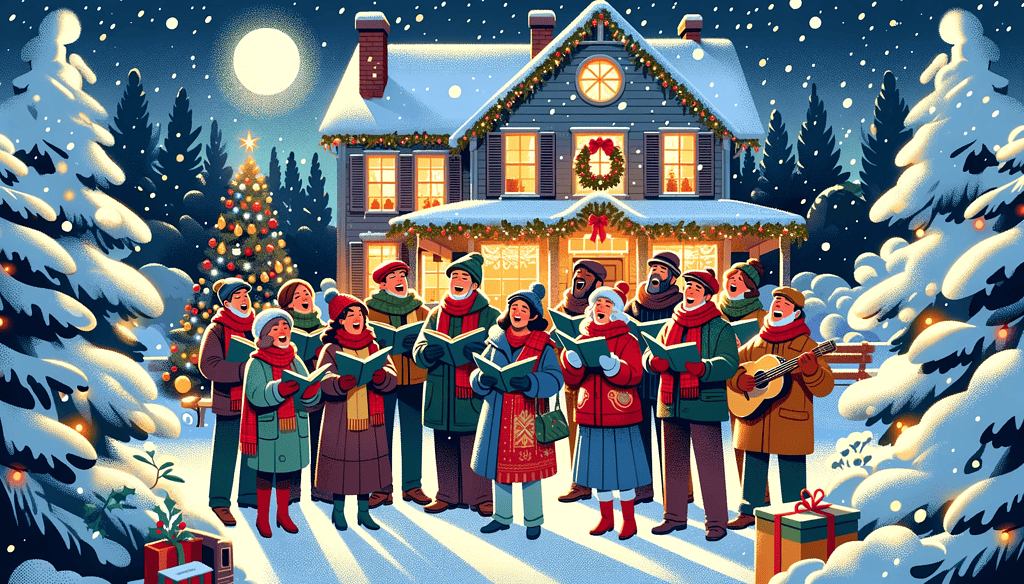
Ancient Egyptian Celebrations of Ra
The ancient Egyptians celebrated the rebirth of Ra, the sun god, during the winter solstice. They decorated with greenery and held festivals and processions in honor of Ra’s renewed strength as the days began to lengthen. The emphasis on the sun’s rebirth and the use of greenery for decoration find echoes in modern Christmas celebrations.
Japanese Winter Solstice Festival (Tōji)
Tōji is the Japanese celebration of the winter solstice. Traditionally, it involves taking a bath with yuzu, a citrus fruit, to protect against colds and rejuvenate the body. People also eat kabocha, a type of winter squash, which is believed to bring good health. The focus on health and rejuvenation during the darkest part of the year is a theme that resonates with the broader significance of winter solstice celebrations.
Iranian Yalda Night
Yalda Night, celebrated in Iran, marks the longest night of the year. Families gather to eat, read poetry, and enjoy each other’s company until after midnight. Fruits and nuts are consumed, and the emphasis is on the triumph of light over darkness, a common theme in many winter solstice traditions.
Modern Adaptations and Pagan Influence on Christmas
In time, these practices gradually changed and adapted. Some of that was intentional — Christians wanted to incorporate as many popular beliefs as possible, so they could get more adepts. But some of it was unintentional.
Culture shifts and morphs in ways that are often unexpected. Nowadays, Christmas is as much about consumerism as it is about pagan rituals or the birth of Jesus Christ. It’s a multifaceted and complex celebration.
Modern paganism continues to embrace and adapt these ancient solstice traditions, blending historical practices with contemporary beliefs. These celebrations provide a link to the past while allowing for personal and communal expression in the present.
Contemporary Celebrations and Community Gatherings
Today, winter solstice celebrations have seen a revival, with community gatherings and public events becoming increasingly common. These modern adaptations honor the essence of the ancient traditions while fostering a sense of unity and connection in an increasingly fragmented world.
Despite their widespread influence, pagan solstice celebrations are often misunderstood. This is unfortunate and we should foster greater awareness and understanding of these rich traditions.
Ultimately, the matter of consumerism should also be addressed. Preserving the authenticity of traditional practices in the face of modernization and commercialization remains a significant challenge. Balancing respect for tradition with the realities of contemporary life is a delicate task for those who seek to keep these ancient customs alive.
In conclusion, the pagan winter solstice celebrations, with their rich history and evolving nature, offer a fascinating glimpse into humanity’s enduring connection with the natural world and the cycles of life. As you witness the traditions of the winter season, remember the ancient roots that continue to sprout new branches, connecting us to our past and guiding us towards a more unified and enlightened future.



